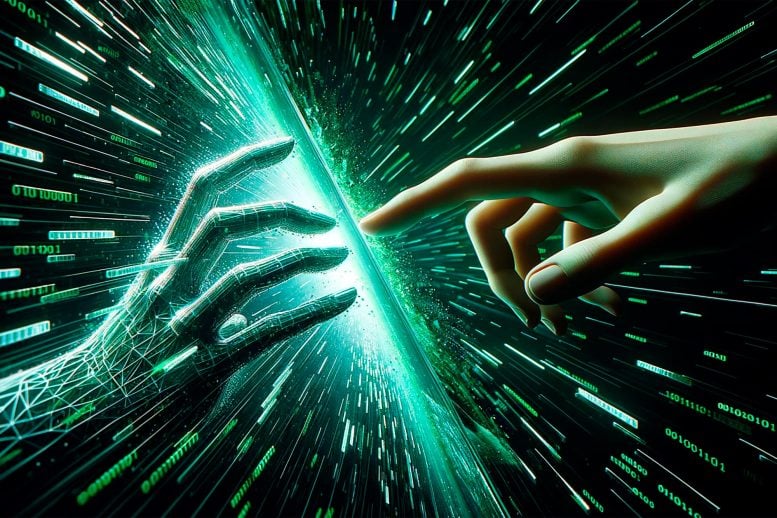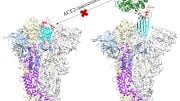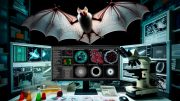
The simulated universe theory proposes that our reality is a complex computer simulation, an idea echoed throughout history and popular culture. The second law of infodynamics, a concept introduced using information theory, suggests that information entropy must decrease or remain constant over time. This new law might provide evidence for the simulated universe theory, as it implies universal data optimization and compression, which are characteristics of a simulation.
New research on information entropy may offer evidence for the theory that our universe is a sophisticated simulation, with deep implications for various fields, from biology to cosmology.
The simulated universe theory implies that our universe, with all its galaxies, planets and life forms, is a meticulously programmed computer simulation. In this scenario, the physical laws governing our reality are simply algorithms. The experiences we have are generated by the computational processes of an immensely advanced system.
While inherently speculative, the simulated universe theory has gained attention from scientists and philosophers due to its intriguing implications. The idea has made its mark in popular culture, across movies, TV shows, and books – including the 1999 film The Matrix.
Historical Context
The earliest records of the concept that reality is an illusion are from ancient Greece. There, the question “What is the nature of our reality?” posed by Plato (427 BC) and others, gave birth to idealism. Idealist ancient thinkers such as Plato considered mind and spirit as the abiding reality. Matter, they argued, was just a manifestation or illusion.
Fast forward to modern times, and idealism has morphed into a new philosophy. This is the idea that both the material world and consciousness are part of a simulated reality. This is simply a modern extension of idealism, driven by recent technological advancements in computing and digital technologies. In both cases, the true nature of reality transcends the physical.
The Scientific Perspective
Within the scientific community, the concept of a simulated universe has sparked both fascination and skepticism. Some scientists suggest that if our reality is a simulation, there may be glitches or patterns within the fabric of the universe that betray its simulated nature.
However, the search for such anomalies remains a challenge. Our understanding of the laws of physics is still evolving. Ultimately, we lack a definitive framework to distinguish between simulated and non-simulated reality.
A New Law of Physics
If our physical reality is a simulated construct, rather than an objective world that exists independently of the observer, then how could we scientifically prove this? In a 2022 study, I proposed a possible experiment, but it remains untested today.
However, there is hope. Information theory is the mathematical study of the quantification, storage and communication of information. Originally developed by mathematician Claude Shannon, it has become increasingly popular in physics and is used a growing range of research areas.
In my recent research, published in AIP Advances, I used information theory to propose a new law of physics, which I call the second law of infodynamics. And importantly, it appears to support the simulated universe theory.
At the heart of the second law of infodynamics is the concept of entropy – a measure of disorder, which always rises over time in an isolated system. When a hot cup of coffee is left on the table, after a while it will achieve equilibrium, having the same temperature with the environment. The entropy of the system is at maximum at this point, and its energy is minimum.
The second law of infodynamics states that the “information entropy” (the average amount of information conveyed by an event), must remain constant or decrease over time – up to a minimum value at equilibrium.
So it is in total opposition to the second law of thermodynamics (that heat always flows spontaneously from hot to cold regions of matter while entropy rises). For a cooling cup of coffee, it means that the spread of probabilities of locating a molecule in the liquid is reduced. That’s because the spread of energies available is reduced when there’s thermal equilibrium. So information entropy always goes down over time as entropy goes up.
Applications and Implications of the New Law
My study indicates that the second law of infodynamics appears to be a cosmological necessity. It is universally applicable with immense scientific ramifications. We know the universe is expanding without the loss or gain of heat, which requires the total entropy of the universe to be constant. However, we also know from thermodynamics that entropy is always rising. I argue this shows that there must be another entropy – information entropy – to balance the increase.
My law can confirm how genetic information behaves. But it also indicates that genetic mutations are at the most fundamental level not just random events, as Darwin’s theory suggests. Instead, genetic mutations take place according to the second law of infodynamics, in such a way that the genome’s information entropy is always minimised. The law can also explain phenomena in atomic physics and the time evolution of digital data.
Most interestingly, this new law explains one of the great mysteries of nature. Why does symmetry rather than asymmetry dominate the universe? My study demonstrates mathematically that high symmetry states are the preferred choice because such states correspond to the lowest information entropy. And, as dictated by the second law of infodynamics, that’s what a system will naturally strive for.
I believe this discovery has massive implications for genetic research, evolutionary biology, genetic therapies, physics, mathematics, and cosmology, to name a few.
Simulation Theory
The main consequence of the second law of infodynamics is the minimization of the information content associated with any event or process in the universe. This in turn means an optimization of the information content, or the most effective data compression.
Since the second law of infodynamics is a cosmological necessity, and appears to apply everywhere in the same way, it could be concluded that this indicates that the entire universe appears to be a simulated construct or a giant computer.
A super complex universe like ours, if it were a simulation, would require built-in data optimization and compression in order to reduce the computational power and the data storage requirements to run the simulation. This is exactly what we are observing all around us, including in digital data, biological systems, mathematical symmetries and the entire universe.
Further studies are necessary before we can definitely state that the second law of infodynamics is as fundamental as the second law of thermodynamics. The same is true for the simulated universe hypothesis.
But if they both hold up to scrutiny, this is perhaps the first time scientific evidence supporting this theory has been produced – as explored in my recent book.
Written by Melvin M. Vopson, Associate Professor of Physics, University of Portsmouth.
Adapted from an article originally published in The Conversation.![]()









This is dealt with interestingly in author Douglas Phillips latest SF book in his Quantum series (book 5) titled ‘Quantum Chaos’.
this is silly. If a simulation, then a simulator. that in turn is either real, by some definition, or a simulation. all we have evidence for, in this scenario, is that continous realities are simulations, sample size of one. Therefore, this new one is a simulation. Rinse, repeat.
Turtles, I say! Turtles all the way down~
False flags and psyops; how great it would be to change history with just a few key strokes, I see it all, this apparent psychopathic need to lie about everything; not that I’m calling this research a falsehood, but it leads itself to abuse, since if everything is in fact nothing more than illusion including ourselves, then there can be no such thing as murder, since we don’t really even exist. I suspected something of the sort from reading Stephen Hawking, I wouldn’t even be a bit surprised if he wasn’t even murdered, just to be able to try to sell this illusion of a universal truth.
Physics ran up against the limits of reality about a century ago. None of this is a surprise. It’s going to get worse.
Maybe the reason why the universe doesn’t seem to be completely “real”, is because as of yet it’s only a probability. What event might make the possible a reality? For the mind of a primate probably nothing, it’s mind appears to be eternally flawed, like an animal without eyes humans seem to be completely incapable of “seeing”, that, which is clearly starring them in their face.
Great article Melvin.